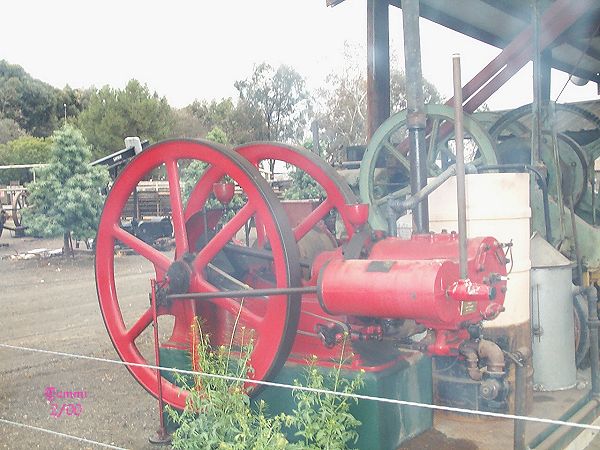That is one very nice trailer, Rtqii!
Actually I think mine looks better than the one in that pic... But the design is identical, I have diamond steel plate where there is wood on that trailer.
Pulling it with a load caused me to throw a rod and drop a valve in the truck the other day tho... At least that is what it sounded like... .. .
I was pulling up a hill... The engine has had a knock since I bought it a couple weeks back, I always dismissed it as a diesel knock. Ignorance is bliss.
I was pulling the loaded rig outside Tumuncari, New Mexico and the knock was getting worse and worse. Part of me knew it was no big deal, part of me knew it was a rod getting ready to let go... The thing was the knock was not regular like a rod and I did not feel it thru the pedal like a rod.
I had just passsed a truck stop and decided if it was a rod, I was going to launch it thru the block right then and there where I could get a tow and a new engine... So up the steep hill I floored it and held it to the floor as all hell broke loose.
Did I ever tell you guys I am hard on equipment? Always within specs... Just hard.
I heard, and then felt, a valve drop... I mean I heard and felt the valve hitting the top of the piston, steel on steel, running flat out under a load up a hill... And I did not let off the pedal, I held it floored, hard, having already decided we were going to have it out right then and there.
At first when I started climbing that hill outside Tumuncari the engine sounded like it was fueled on whole walnuts... But up that hill with the trailer, loaded, and the rack wide open it sounded like it was chewing up glass marbles... Then I heard, and felt, a valve hitting the top of the piston.
The engine never choked or let up pulling with power, and I never let up off the rack... You can't blow an engine properly if you let off when it starts to come apart. But after what seemed like several seconds of steel on steel impacts the engine finally spit out the offending "parts" and in the rear view mirror I saw red sparks and glowing streamers blowing out the exhaust and swirling about in the dust and smoke I was leaving as I pulled up over the hill.
I never let off the pedal, the engine smoothed out noticeably, the knock all but vanished and she sounded better than ever as she pulled the load up over the crest and settled in for the downhill at speed.
What happened? The knock was caused by accumulated carbon deposits and one cylinder was choked up more than the others. After 8 hours or so pulling the loaded trailer things had warmed up good, and the predetonation that the carbon deposit was causing began to shake itself loose. When I stepped on it hard and held it down with a good load, the petrified carbon finally broke loose... It rattled around in the combustion chamber for a few cycles trying to find its way out, it finally lodged in the exhaust valve. These carbon deposits are only slightly softer than stone... With the valve wedged open, the piston slapped the head of the valve a few times and it finally broke the carbon chunk up into managable pieces... Which blew out as a glowing spray from the exhaust. It took a few seconds (it seemed, it was only a few cycles this all happened in slow motion to my ears) to chew this chunk up and spew out the digested bits.
Kinda like passing a kidney stone... It never would have come out without pulling the heads and busting it loose with a chiselÂ





















